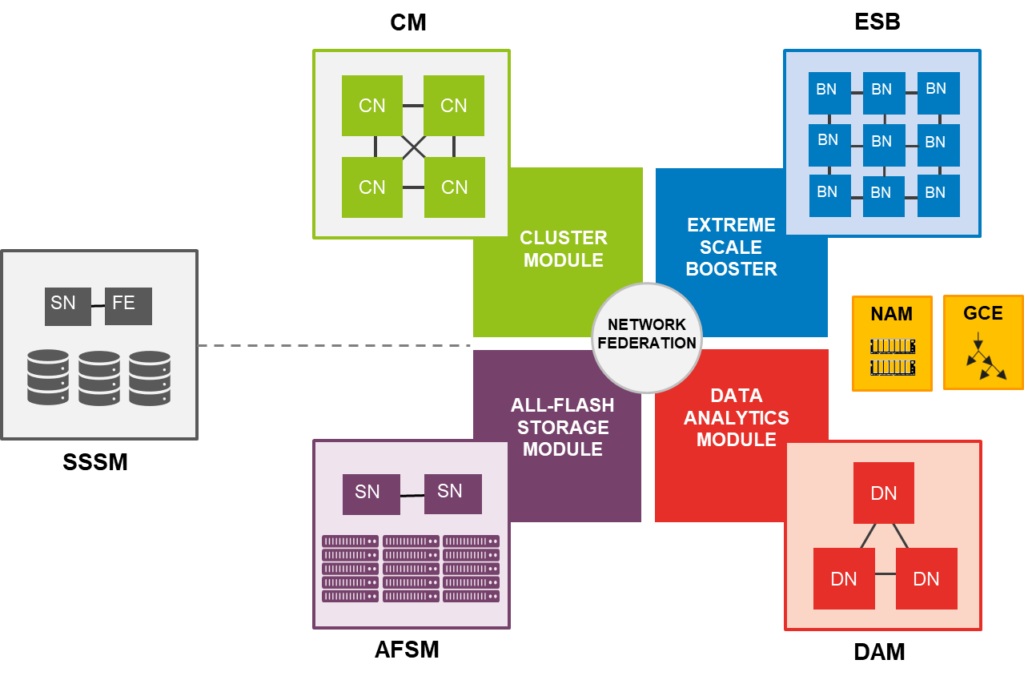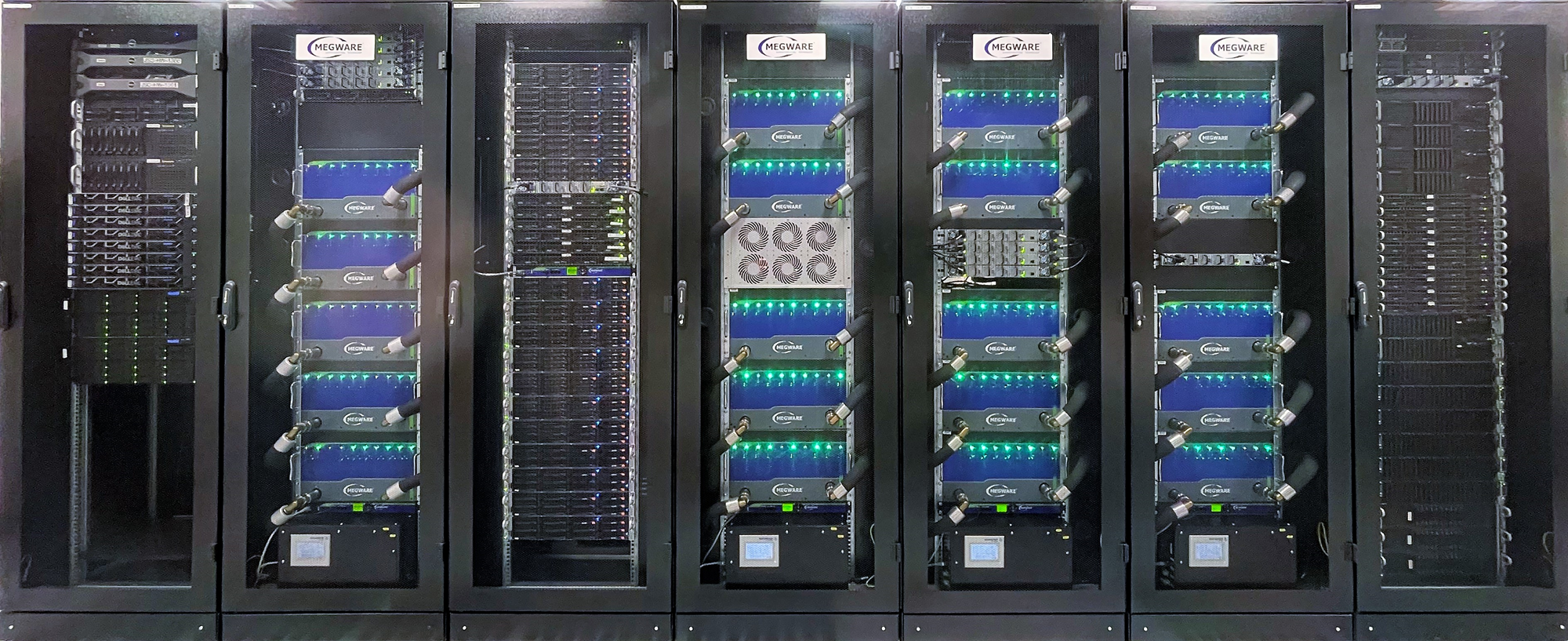
The DEEP-EST project developed and validated the first multi-module Modular Supercomputing Architecture system (the Cluster/Booster systems of DEEP and DEEP-ER had just two modules): a 50-node dual-processor Intel® Xeon® Cluster module using InfiniBand EDR, a 75-node Booster with one NVIDIA V100 GPU each coupled to a small x86 host CPU and interconnected by the ASIC implementation of the EXTOLL network, a data analytics module with 16 high-end dual-processor Intel® Xeon® nodes with an Intel® Stratix ® 10 FPGA attached and 3 Terabytes of nonvolatile Intel® OptaneTM Byte-addressable memory. A conventional, disk-based storage module and an innovative, NVMe flash module support low-latency, high-bandwidth parallel I/O via the BeeGFS parallel file system. The Cluster and Booster modules use Megware’s blade and warm water cooling technologies, and Megware-developed power meters report the overall power and energy use of each node with a time resolution of a few milliseconds. The EXTOLL and InfiniBand networks were connected by a gateway-based network federation, and ParaStation MPI provided seamless and transparent communication across the whole prototype.
As exploratory research activities, a next generation prototype of an EXTOLL-attached memory device (NAM) and a novel acceleration device for collective MPI communication (GCE) were created and their functionality was validated. The DEEP-EST prototype continues to be used by the DEEP-SEA projects, and EXTOLL GmbH changed its business model to developing network-related silicon IP blocks.


Together with the lessons learnt from the previous DEEP projects, six complex, real-world HPC applications from the fields of brain simulation , high energy physics event reconstruction , molecular dynamics for life sciences , radio astronomy , satellite image analysis and space weather simulation , provided co-design input for the DEEP-EST protype. The satellite image analysis and the space weather application introduced AI/ML components. The DEEP software stack was adapted and extended to cover he new, multi-module MSA system, and a extgeneration networked attached memory plus an innovative MPI collective communications offload engine were integrated with the resource manager and ParaStation MPI.

The DEEP-EST project started on July 1, 2017 and came to a successful conclusion on March 31, 2021. The consortium consisted of sixteen partners from nine European countries, with Forschungszentrum Jülich acting as the coordinator. The project budget was 15.4M €, and the European Union contribution was
15 M€.
The DEEP-EST project has received funding from the European Community’s Horizon 2020 Programme under grant agreement No. 754304.
Project stats
- Project Acronym: DEEP-EST (Dynamical Exascale Entry Platform – Extreme Scale Technologies)
- Contract n°: ICT-754304
- Start Date: 01/07/2017
- Duration: 45 months
- Total Budget: 15.365.546 €
- EC Funding: 14.998.342 €
The DEEP-EST project partners
- ASTRON
- Barcelona Supercomputing Centre (BSC)
- CERN
- EPCC
- EXTOLL
- Fraunhofer Institute for Industrial Mathematics (ITWM)
- Forschungszentrum Jülich
- KULeuven
- Leibniz Supercomputing Centre
- Megware
- National Center for Supercomputing Applications (NCSA)
- Norwegian University of Life Sciences (NMBU)
- ParTec AG
- University of Heidelberg
- University of Iceland


